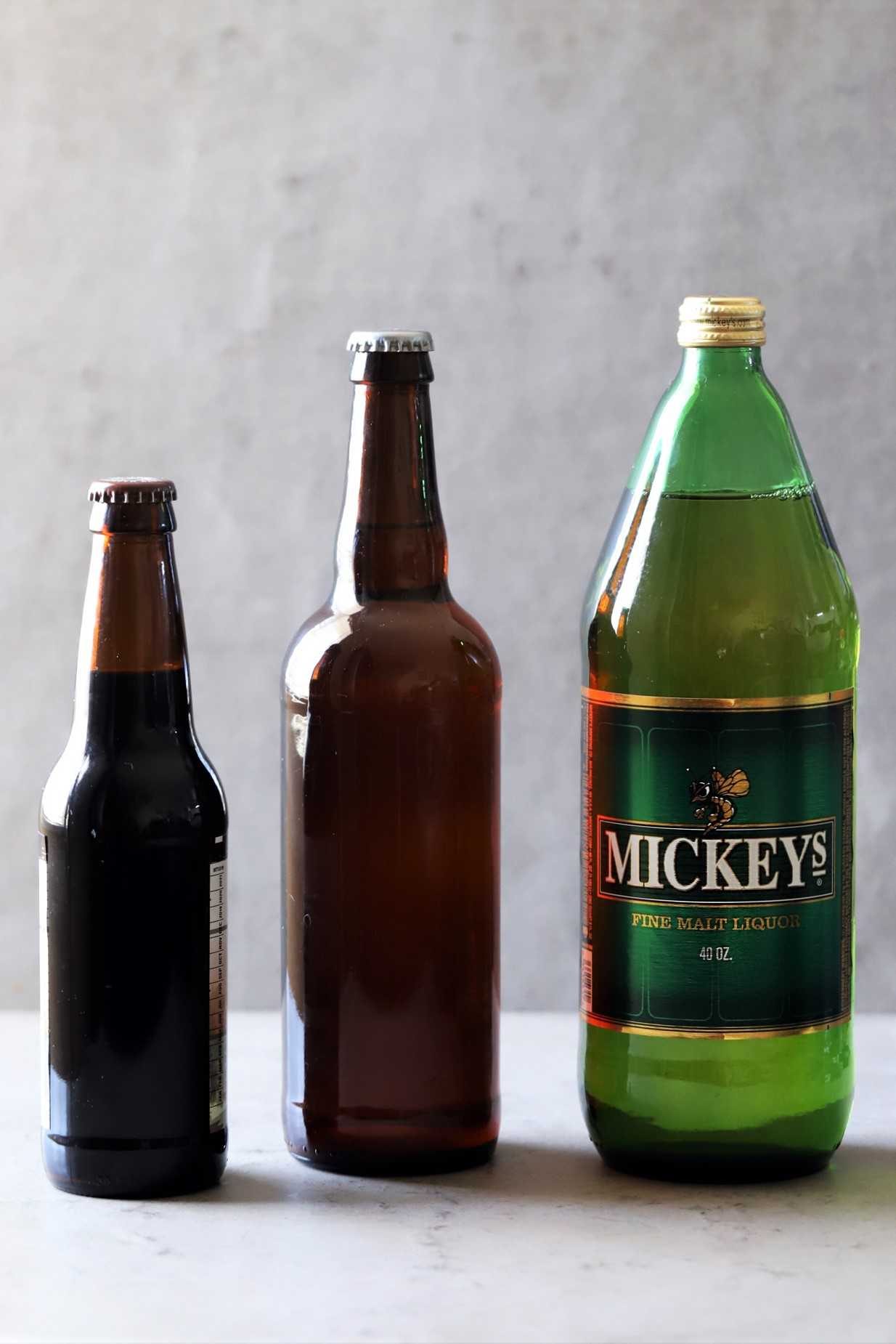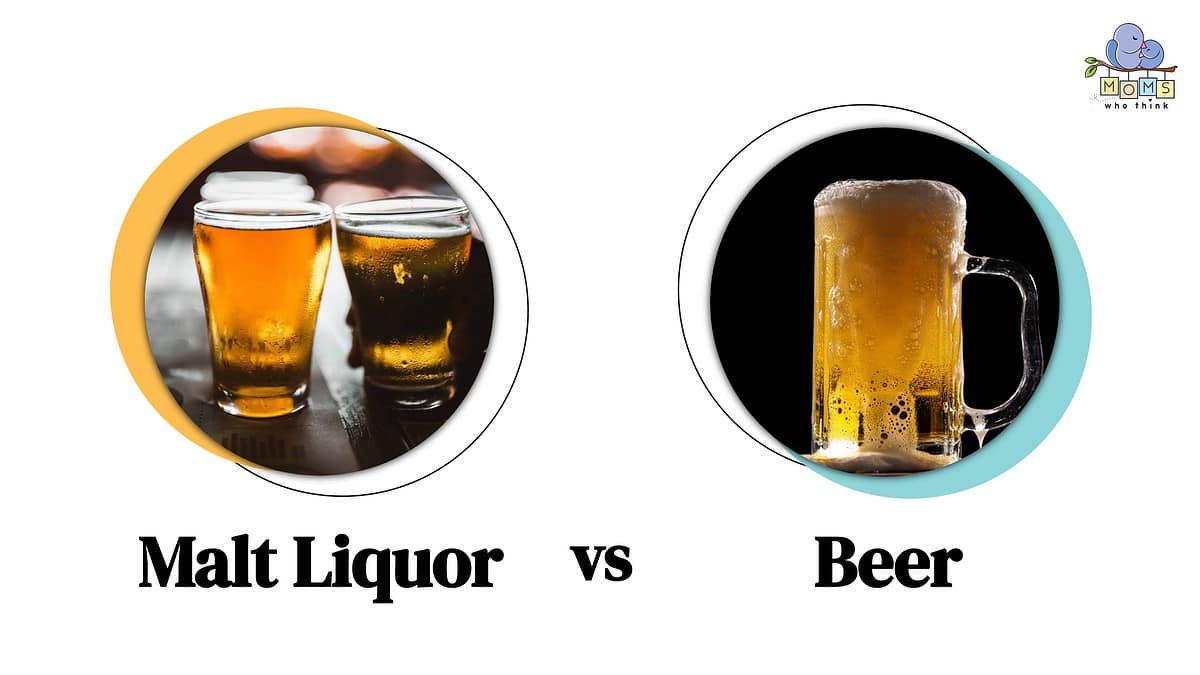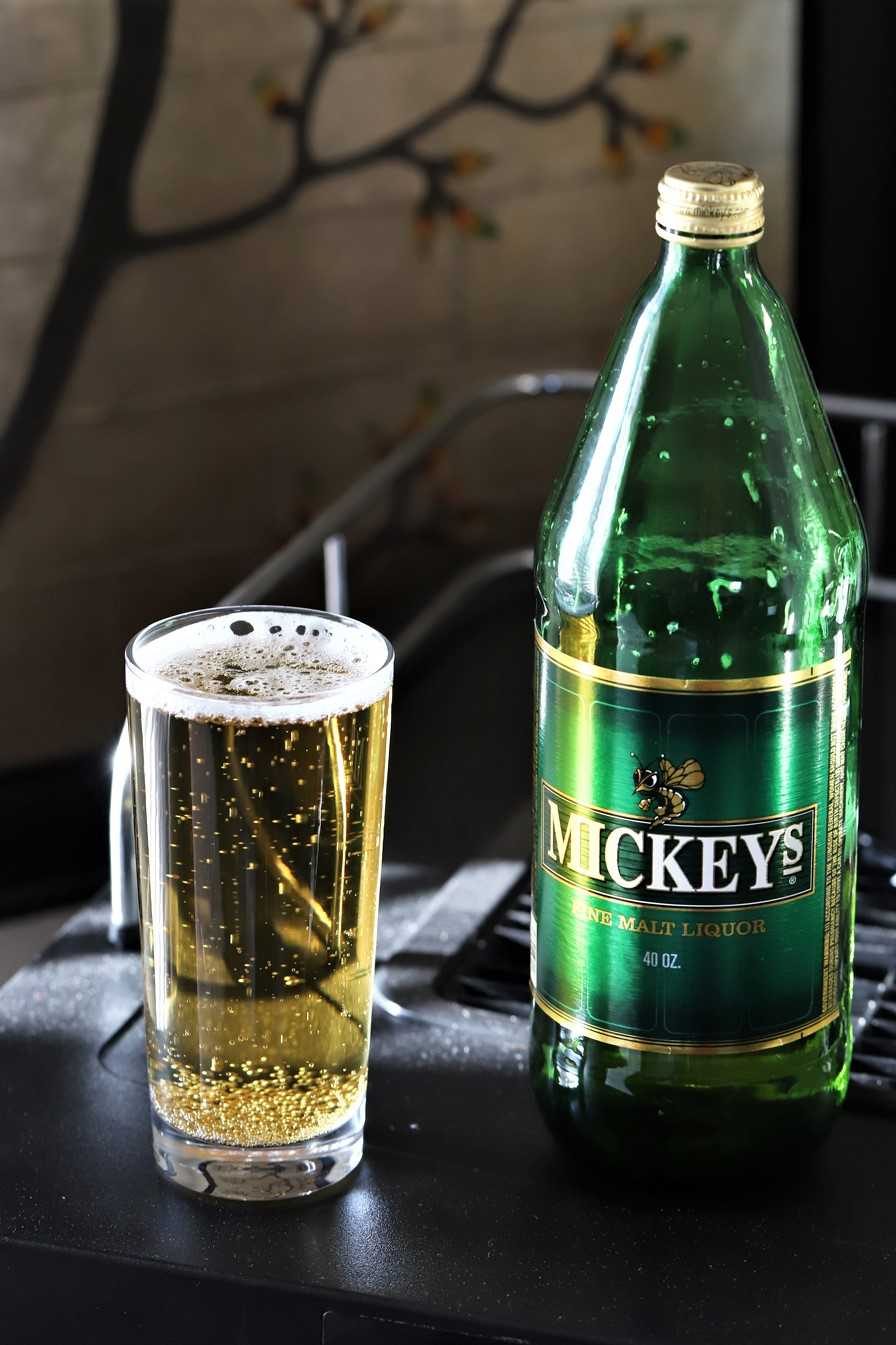
Introduction
Definition And Brief History Of Malt Liquor And Beer
Malt liquor is a type of alcoholic beverage that is part of the broader beer category. It incorporates malted barley, corn, rice, or other grains in its production process. What sets malt liquor apart from traditional beers is its typically higher alcohol content. The origins of malt liquor can be traced back to the early 20th century in the United States, with its popularity growing among urban communities.
Beer, on the other hand, is a widely consumed alcoholic beverage that is brewed from malted barley. It is known for its diverse range of styles, flavors, and alcohol content. Beer has a long and rich history, with evidence of its existence dating back thousands of years. It has been a staple in many cultures and is enjoyed by people all around the world.
Purpose Of The Blog Post And Key Points To Be Discussed
The purpose of this blog post is to elucidate the key differences between malt liquor and beer, providing a better understanding of these two popular beverages. The following points will be discussed:
- Definition and composition: Exploring the components used in the production of malt liquor and beer.
- Alcohol content: Highlighting the higher alcohol content typically found in malt liquor compared to traditional beers.
- Flavor profiles: Examining the different flavor profiles and characteristics of malt liquor and beer.
- Cultural associations: Discussing the cultural associations and demographics of malt liquor and beer consumption.
- Commercial availability: Comparing the availability and popularity of malt liquor and beer in the market.
With a comprehensive analysis of these points, readers will gain a deeper insight into the unique qualities and distinctions that make malt liquor and beer separate entities within the realm of alcoholic beverages.
Ingredients And Brewing Process
Ingredients Used In Brewing Malt Liquor
Malt liquor is brewed using a combination of malted barley, corn, rice, or other grains. These adjuncts are added to increase the alcohol content without significantly affecting the taste. Some malt liquors may also incorporate sugar to further enhance the alcohol content. The specific combination of ingredients used can vary depending on the brand and recipe.
Ingredients Used In Brewing Traditional Beer
Traditional beer, on the other hand, is primarily brewed using malted barley as the main ingredient. Hops, yeast, and water are also essential components of the brewing process. Different beer styles may utilize different types of malted barley or additional ingredients such as wheat, rye, or oats to achieve the desired flavor and aroma.
The brewing process for both malt liquor and traditional beer involves similar steps, including mashing, boiling, fermentation, and conditioning. However, the specific techniques and timing may vary depending on the recipe and desired outcome.
Malt liquor is typically fermented for a longer period compared to beer, which allows for the higher alcohol content to develop. The use of adjuncts in malt liquor brewing can also affect the fermentation process and give the beverage its distinct characteristics.
In contrast, traditional beer brewing focuses on achieving a balance between malt sweetness and hop bitterness. The choice of hops, yeast strains, and fermentation temperatures contributes to the unique flavor profiles of different beer styles.
Overall, both malt liquor and beer undergo a brewing process that involves fermenting grains and adding specific ingredients to create their individual characteristics.
Brewing Techniques And Equipment
Brewing Techniques Specific To Malt Liquor
Malt liquor brewing involves specific techniques to achieve its unique characteristics. One of the key differences is the use of adjuncts like corn, rice, or other grains, which are added to increase the alcohol content without significantly affecting the taste. These adjuncts can contribute to the smoothness and sweetness of the malt liquor. Furthermore, the fermentation process for malt liquor is typically longer compared to beer, allowing for the higher alcohol content to develop. This extended fermentation period also contributes to the stronger, more robust flavors often associated with malt liquor.
Brewing Techniques Specific To Traditional Beer
Traditional beer brewing focuses on achieving a balance between malt sweetness and hop bitterness. The brewing process for traditional beer generally utilizes malted barley as the main ingredient, along with hops, yeast, and water. Different types of malted barley or additional grains like wheat, rye, or oats can be used to create specific flavors and aromas in different beer styles. The choice of hops, yeast strains, and fermentation temperatures also plays a crucial role in determining the flavor profile of the beer. The brewing process for traditional beer is often shorter compared to malt liquor, resulting in lower alcohol levels and a typically lighter body.
In terms of equipment, the brewing process for both malt liquor and traditional beer requires similar equipment such as mash tuns, boilers, fermenters, and conditioning tanks. However, specific variations may exist depending on the scale of production and the preferences of individual breweries.
Overall, the brewing techniques for malt liquor and traditional beer differ in terms of the ingredients used, fermentation periods, and desired outcomes. These differences contribute to the distinct characteristics and taste preferences of each beverage.

Packaging And Size Differences
Packaging Options For Malt Liquor
Malt liquor is commonly packaged in larger size containers compared to traditional beer. It is often available in 40-ounce bottles or cans, which are often referred to as “forties.” These larger packages are popular among malt liquor drinkers due to their higher alcohol content and affordability. Malt liquor is also available in smaller sizes such as 24-ounce cans or 16-ounce cans, giving consumers more options to choose from.
Packaging Options For Traditional Beer
Traditional beer is typically packaged in a variety of sizes, catering to different consumer preferences. It is commonly found in 12-ounce bottles, which are the standard size for individual servings. Traditional beer is also available in larger container formats such as 22-ounce bottles or 16-ounce cans, providing options for those who want more beer in a single serving. Additionally, traditional beer is often packaged in packs of 6, 12, or 24 cans or bottles, allowing consumers to purchase multiple servings at once.
In terms of packaging materials, both malt liquor and traditional beer are commonly packaged in glass bottles, aluminum cans, or kegs. The choice of packaging material often depends on the brewery’s branding and marketing strategy, as well as the preferences of the target market.
Comparing the packaging options for malt liquor and traditional beer:
| Malt Liquor | Traditional Beer |
|---|---|
| Larger size containers (40-ounce) | Multiple size options (12-ounce, 16-ounce, 22-ounce) |
| Smaller sizes available (24-ounce, 16-ounce) | Pack options (6-pack, 12-pack, 24-pack) |
| Glass bottles, aluminum cans, or kegs | Glass bottles, aluminum cans, or kegs |
Overall, the packaging options for malt liquor and traditional beer differ primarily in the sizes available and the preferences of the target market. Malt liquor tends to be packaged in larger containers, while traditional beer is offered in a range of sizes to cater to individual preferences and serving needs.
Packaging And Size Differences
Packaging Options For Malt Liquor
Malt liquor is commonly packaged in larger size containers compared to traditional beer. It is often available in 40-ounce bottles or cans, which are often referred to as “forties.” These larger packages are popular among malt liquor drinkers due to their higher alcohol content and affordability. Malt liquor is also available in smaller sizes such as 24-ounce cans or 16-ounce cans, giving consumers more options to choose from.
Packaging Options For Traditional Beer
Traditional beer is typically packaged in a variety of sizes, catering to different consumer preferences. It is commonly found in 12-ounce bottles, which are the standard size for individual servings. Traditional beer is also available in larger container formats such as 22-ounce bottles or 16-ounce cans, providing options for those who want more beer in a single serving. Additionally, traditional beer is often packaged in packs of 6, 12, or 24 cans or bottles, allowing consumers to purchase multiple servings at once.
In terms of packaging materials, both malt liquor and traditional beer are commonly packaged in glass bottles, aluminum cans, or kegs. The choice of packaging material often depends on the brewery’s branding and marketing strategy, as well as the preferences of the target market.
Comparing the packaging options for malt liquor and traditional beer:
| Malt Liquor | Traditional Beer |
|---|---|
| Larger size containers (40-ounce) | Multiple size options (12-ounce, 16-ounce, 22-ounce) |
| Smaller sizes available (24-ounce, 16-ounce) | Pack options (6-pack, 12-pack, 24-pack) |
| Glass bottles, aluminum cans, or kegs | Glass bottles, aluminum cans, or kegs |
Overall, the packaging options for malt liquor and traditional beer differ primarily in the sizes available and the preferences of the target market. Malt liquor tends to be packaged in larger containers, while traditional beer is offered in a range of sizes to cater to individual preferences and serving needs.
Alcohol Content And ABV
Alcohol Content In Malt Liquor
Malt liquor generally boasts a higher alcohol by volume (ABV) compared to most traditional beers. While regular beer typically ranges from around 4% to 6% ABV, malt liquor can have an ABV ranging from 6% to even 12% or more. The higher alcohol content in malt liquor is one of the factors that contribute to its unique taste and effects.
Alcohol Content In Traditional Beer
Traditional beer has a lower alcohol content compared to malt liquor. It usually has an ABV of around 4% to 6%. The lower alcohol content in traditional beer makes it a more suitable choice for those who prefer a milder drinking experience or who want to consume alcoholic beverages in moderation.
In summary, malt liquor and traditional beer have distinct differences in packaging, sizes available, and alcohol content. Malt liquor is often packaged in larger containers and has a higher ABV compared to traditional beer, which is typically available in a variety of sizes and has a lower ABV. Understanding these differences can help consumers make informed choices based on their preferences and intended drinking experience.
Taste And Flavor Profile
Characteristics Of Malt Liquor Taste And Flavor
Malt liquor is known for its bold and robust flavors. It often has a sweeter taste compared to traditional beer, due to the higher amount of malt used in its brewing process. The flavors in malt liquor can range from malty and caramel-like to fruity and even slightly spicy. It may also have a more viscous and full-bodied texture, contributing to its distinct mouthfeel.
Characteristics Of Traditional Beer Taste And Flavor
Traditional beer offers a wide range of taste and flavor profiles, depending on the style. Light lagers tend to have a crisp and clean taste, with subtle malt sweetness and a mild hop bitterness. Ales, on the other hand, can showcase a broader spectrum of flavors, including fruity, floral, and hoppy profiles. Traditional beers often have a lighter body and a more refreshing and effervescent mouthfeel.
In terms of flavor complexity, traditional beers can offer a greater variety compared to malt liquor. Craft breweries, in particular, are known for their experimentation with different ingredients and brewing techniques, resulting in unique and innovative flavors.
It’s important to note that personal preferences play a significant role in determining which taste and flavor profile is more appealing. Some individuals may enjoy the richness and intensity of malt liquor, while others may prefer the diversity and subtlety of traditional beer.
Overall, the taste and flavor of malt liquor and traditional beer differ in terms of sweetness, complexity, and mouthfeel. Understanding these characteristics can help individuals choose the right beverage to suit their individual tastes and preferences.
Taste And Flavor Profile
Characteristics Of Malt Liquor Taste And Flavor
Malt liquor has bold and robust flavors, with a sweeter taste compared to traditional beer due to the higher amount of malt used. The flavors can range from malty and caramel-like to fruity and slightly spicy. It also has a more viscous and full-bodied texture, contributing to its distinct mouthfeel.
Characteristics Of Traditional Beer Taste And Flavor
Traditional beer offers a wide range of taste and flavor profiles. Light lagers have a crisp and clean taste, with subtle malt sweetness and mild hop bitterness. Ales have a broader spectrum of flavors, including fruity, floral, and hoppy profiles. Traditional beers have a lighter body and a more refreshing and effervescent mouthfeel.
In terms of flavor complexity, traditional beers offer a greater variety compared to malt liquor, especially with craft breweries known for experimenting with different ingredients and brewing techniques.
Consumption Settings
Common Places And Occasions For Drinking Malt Liquor
Malt liquor is commonly associated with solitary drinking or consumption in less sociable settings. Some common occasions for drinking malt liquor include:- Drinking alone at home or in a private setting- Casual gatherings or parties with close friends or family members
Common Places And Occasions For Drinking Beer
Beer is often consumed in public places and social settings. Some common places and occasions for drinking beer include:- Bars and pubs- Restaurants- Breweries and beer festivals- BBQs, picnics, and outdoor events- Sporting events and concerts
It’s important to note that personal preferences play a significant role in determining where and when individuals choose to drink malt liquor or beer. Some people may enjoy the solitude of drinking malt liquor at home, while others may prefer the social atmosphere of enjoying a beer at a bar or gathering.
Overall, the taste, flavor, and consumption settings differ between malt liquor and beer, allowing individuals to choose the option that best suits their preferences and occasions.

Comparison And Contrast
Key Similarities Between Malt Liquor And Beer
- Both malt liquor and beer are alcoholic beverages made from malted grains, hops, water, and yeast.
- Both beverages undergo a fermentation process that converts sugars into alcohol.
- Malt liquor and beer can be enjoyed cold and are often served in bottles or cans.
- Both malt liquor and beer are widely popular and readily available in various brands and flavors.
Key Differences Between Malt Liquor And Beer
- Alcohol Content: Malt liquor typically has a higher alcohol by volume (ABV) compared to most traditional beers.
- Taste and Flavor Profile: Malt liquor has bold and robust flavors with a sweeter taste, while traditional beers offer a wider range of taste and flavor profiles.
- Texture and Mouthfeel: Malt liquor has a more viscous and full-bodied texture, while traditional beers have a lighter body and a refreshing mouthfeel.
- Consumption Settings: Malt liquor is commonly associated with solitary drinking or consumption in less sociable settings, while beer is often enjoyed in public places and social gatherings.
Overall, malt liquor and beer offer different taste experiences and are consumed in different settings. While malt liquor tends to have a higher alcohol content and bolder flavors, traditional beers offer more variety and are enjoyed in a wider range of social settings. The choice between malt liquor and beer ultimately comes down to personal preferences and the occasion.
Comparison And Contrast
Key Similarities Between Malt Liquor And Beer
- Both malt liquor and beer are alcoholic beverages made from malted grains, hops, water, and yeast.
- Both beverages undergo a fermentation process that converts sugars into alcohol.
- Malt liquor and beer can be enjoyed cold and are often served in bottles or cans.
- Both malt liquor and beer are widely popular and readily available in various brands and flavors.
Key Differences Between Malt Liquor And Beer
- Alcohol Content: Malt liquor typically has a higher alcohol by volume (ABV) compared to most traditional beers.
- Taste and Flavor Profile: Malt liquor has bold and robust flavors with a sweeter taste, while traditional beers offer a wider range of taste and flavor profiles.
- Texture and Mouthfeel: Malt liquor has a more viscous and full-bodied texture, while traditional beers have a lighter body and a refreshing mouthfeel.
- Consumption Settings: Malt liquor is commonly associated with solitary drinking or consumption in less sociable settings, while beer is often enjoyed in public places and social gatherings.
Summary Of Differences Between Malt Liquor And Beer
Malt liquor and beer differ in terms of their alcohol content, taste and flavor profile, texture and mouthfeel, and consumption settings. Malt liquor tends to have a higher ABV and bolder flavors, while beer offers a wider range of taste profiles and a lighter body. Malt liquor is often enjoyed in more solitary or less sociable settings, whereas beer is commonly consumed in social gatherings or public places.
Recommendation For Choosing Between Malt Liquor And Beer
The choice between malt liquor and beer ultimately depends on personal preferences and the occasion. If you prefer stronger flavors and a higher ABV, malt liquor may be the better choice. On the other hand, if you enjoy a variety of taste profiles and a lighter body, beer would be the recommended option. Consider the setting and the social aspect as well, as malt liquor is often associated with drinking alone, while beer is more commonly enjoyed in social gatherings.
Frequently Asked Questions:
Q: What is the difference between malt liquor and traditional beer?
A: Malt liquor and traditional beer are both alcoholic beverages, but they differ in terms of ingredients, brewing process, alcohol content, and taste.
Q: What are the main ingredients used in malt liquor and traditional beer?
A: Traditional beer is typically brewed with malted grains such as barley, hops, water, and yeast. On the other hand, malt liquor often contains additional ingredients, such as corn or rice, along with malted barley.
Q: How is malt liquor brewed differently from traditional beer?
A: The brewing process of malt liquor and traditional beer is similar, but malt liquor often undergoes “high-gravity brewing,” which involves using higher proportions of fermentable sugars. This results in a higher alcohol content.
Q: Is malt liquor generally stronger in terms of alcohol content than traditional beer?
A: Yes, malt liquor generally has a higher alcohol content compared to traditional beer. While beer typically ranges between 4-7% alcohol by volume (ABV), malt liquor can have an ABV ranging from 6-12% or even higher in some cases.
Q: Why does malt liquor have a reputation for being inexpensive?
A: Malt liquor often has a reputation for being more affordable compared to traditional beer because it is mass-produced and marketed towards a budget-conscious demographic.
Q: How does the taste of malt liquor differ from traditional beer?
A: Malt liquor tends to have a sweeter and more pronounced malt flavor compared to the traditional bitterness of beer. Some people enjoy the distinct taste of malt liquor, while others prefer the variety of flavors found in different styles of beer.
Q: Are there any specific brands or styles associated with malt liquor and traditional beer?
A: Malt liquor is often associated with specific brands such as Colt 45, Steel Reserve, and Mickey’s, which are known for their higher alcohol content. Traditional beer, on the other hand, encompasses a wide range of styles including lagers, ales, stouts, and pilsners, each with their own unique characteristics.
Q: Can malt liquor and traditional beer be used interchangeably in recipes and cooking?
A: Yes, malt liquor and traditional beer can generally be used interchangeably in recipes that call for beer as an ingredient. However, keep in mind that the flavor profile may vary slightly, depending on whether malt liquor or traditional beer is used.
Q: Are there any legal implications or regulations for malt liquor and traditional beer?
A: Each country has its own set of regulations and legal definitions for malt liquor and traditional beer, including rules regarding alcohol content, labeling, and licensing requirements. It’s important to follow these regulations when producing or selling these products.
Q: Is there a consensus on which is better, malt liquor or traditional beer?
A: The preference for malt liquor or traditional beer is subjective and varies among individuals. Some people enjoy the higher alcohol content and unique taste of malt liquor, while others prefer the variety and flavors offered by the different styles of traditional beer. Ultimately, it comes down to personal preference.

Telegraph Liquor is a brand that was born from a passion for creating exceptional craft beers that bring people together in the spirit of friendship and good times. Our very first creation, the 12-ounce bottle, pours a pitch-black color, topped with a creamy tan-colored head that leaves a beautiful ringed lace as it settles, with a bit of stick on the glass. This carefully crafted beer is made to be shared with friends, embodying the essence of togetherness and camaraderie.The brewing process involves a blend of lambic beers brewed at 3 Fonteinen, with the addition of 30% whole fresh raspberries from the fabled Payottenland and 5% sour cherries. This unfiltered beer undergoes spontaneous refermentation in the bottle, ensuring a pure and authentic flavor experience. We take pride in using only natural ingredients, with no artificial colors or flavor enhancers added, staying true to the traditional brewing methods.